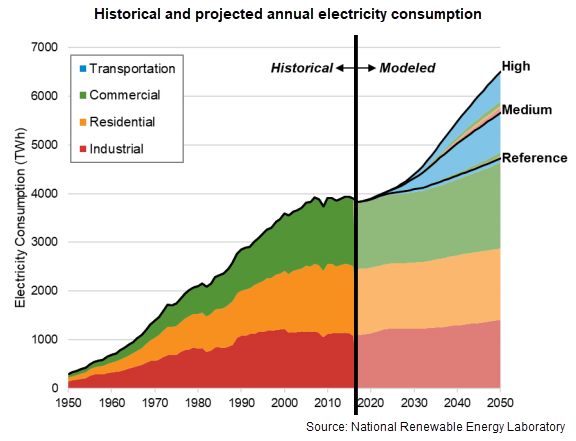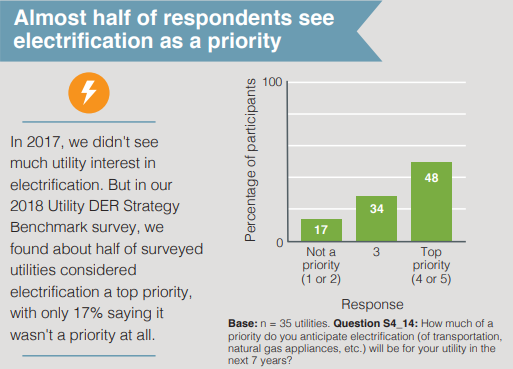| |
  |
|
July 17, 2019
The Importance of an Electrification Roadmap
In the last two years, electrification has gone from being a nonissue for most utilities to a top priority that nearly every utility needs to address. For being known as slow to change, the energy industry is taking on electrification with considerable speed.
The second wave of electrification
If we pause and take a moment to broaden our view—looking back at the history and evolution of electric utilities over the last century—we see that electrification has been happening all along. By understanding how electrification has taken place and layering that knowledge with a clear view of our priorities and limitations, we can better inform our planning for the second wave of electrification.
|
 |
|
What we see missing from most electrification studies is a deep and careful consideration of customer needs, values, and behaviors. New technologies have that “shiny new toy” appeal, which makes them an easy focal point for conversations around electrification. But starting with technologies instead of customers can cost more money and provide limited results in the long run.
Rather than focus on the technology, you should focus on the customers, looking at how they use these technologies. By doing so, you can understand what benefits your customers derive from these technologies, what problems these technologies solve for them, and how they can be motivated to change both their technology-buying and usage behaviors.
The importance of an electrification roadmap
Developing an electrification roadmap is an important first step in advancing any utility electrification initiative. A roadmap draws from high-level utility and group goals and helps to make them tangible. Without a roadmap, it can be difficult to:
- Keep track of your progress
- See where you’re headed and how you expect to get there
- Decide how you should communicate your progress internally and externally
In the June 2019 web conference Building an Electrification Strategy and Roadmap, we discussed the potential benefits of creating and refining an electrification roadmap. Starting with a customer-focused approach when developing your roadmap can be the differentiating factor that sets apart exceptional programs from mediocre ones.
E Source resources
Want more insights into how utility electrification strategies and initiatives are currently evolving? Check out our infographic Strategic Electrification: Insights to Spark Your Interests to learn more about what’s happening across the industry.
|
 |
|
Keep an eye out for our upcoming E Source whitepaper on strategic electrification. Make sure you’ve selected “electrification” in your email alerts preferences, so you’ll be first to know when it publishes.
If you’re interested in creating an electrification roadmap for your utility or refining your existing approach, please contact Cindy Schweitzer, vice president of customer solutions, to learn more about how E Source can help.
|
|
About the author
|
BRYAN JUNGERS
Lead Analyst
Bryan Jungers conducts research on emerging, energy-efficient, and distributed energy resource technologies. His main areas of expertise lie in electric vehicles, electric motors, batteries and energy storage, distributed generation, and renewable power systems. Bryan brings to the company over 10 years of professional experience as an energy engineer and research analyst, including for the Electric Power Research Institute, California Energy Commission, and University of California at Davis.
|
 |
|
|
|
 Talk back! Let us know what you think. If you want to weigh in or chat about this topic, just email Sannie Sieper, E Source director of marketing.
|
|
|

